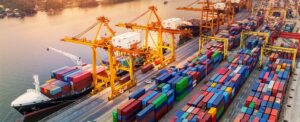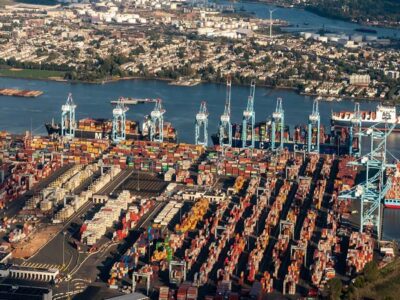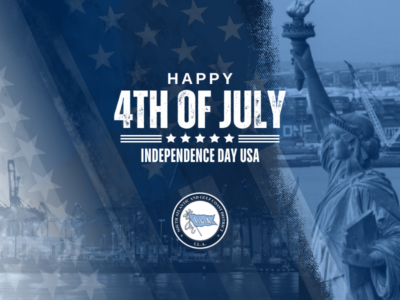I understand it’s nearly impossible to rebut every inaccurate report that circulates in the media. However, this particular narrative is too misleading and damaging to ignore, and it needs to be addressed. The recent wave of reporting criticizing the efficiency of U.S. ports is not only inaccurate but also irresponsible. The claims are largely based on skewed interpretations of data that fail to account for the fundamental differences between U.S. marine terminals and transshipment hubs in other parts of the world.
Let’s address the comparison to ports such as Dar es Salaam in Tanzania and Pointe-Noire in the Republic of Congo, cited in the World Bank and S&P Global Market Intelligence survey. These rankings heavily favor transshipment hubs, which are fundamentally different in operation from U.S. ports. Transshipment ports primarily handle containers that are unloaded from one vessel and immediately loaded onto another, with minimal interaction with inland transportation systems or domestic cargo. In contrast, U.S. ports are full-service gateways that handle a complex mix of imports and exports, integrating rail, trucking, and warehousing to deliver goods across a vast geography. Comparing these two types of facilities is like comparing apples to oranges.
Volume and Complexity
U.S. ports handle one of the highest volumes of cargo in the world. The Port of Los Angeles processes over 9 million TEUs (Twenty-foot Equivalent Units) annually, while the Port of New York and New Jersey handles approximately 9.5 million TEUs. These ports are not only managing import and export cargo but are also critical links in a supply chain that serves vast regions of the country. This includes moving goods to distribution centers and rail networks spanning thousands of miles. The scale and complexity of these operations far exceed the operations of most transshipment ports.
Labor Productivity
Despite the challenges, longshore workers represented by the ILA and other unions consistently demonstrate exceptional productivity. During the COVID-19 pandemic, when global supply chains faced unprecedented disruptions, U.S. port workers kept the economy moving under extreme pressure. Their contribution is unparalleled and often unrecognized in these so-called efficiency studies.
Manipulated Metrics
The World Bank’s study relies on criteria like vessel turnaround times, which inherently favor transshipment ports that focus exclusively on unloading and reloading containers. U.S. ports, on the other hand, must account for time-intensive processes like customs clearance, intermodal transfers, and extensive safety and security protocols mandated by U.S. law. Ignoring these factors distorts the efficiency rankings.
Global Rankings Misrepresented
The mainstream media conveniently ignores surveys that rank U.S. ports among the most reliable in the world. For instance, ports operated by ILA members consistently rank higher globally for throughput and reliability than their competitors. This is a testament to the hard work and dedication of unionized workers who ensure that cargo flows smoothly despite mounting challenges.
Outdated Supporting Infrastructure
What no one seems to be talking about is the outdated infrastructure that supports U.S. ports, such as highways, bridges, rail systems, and dredging operations. Many of these critical connections to the ports are decades behind the needs of modern commerce. Trucks transporting goods often face bottlenecks on congested and deteriorating highways. Aging rail systems struggle to keep up with the demands of intermodal transport. Dredging operations to accommodate larger vessels lag behind, forcing delays and inefficiencies. Is that the ILA’s fault, too? Instead of pointing fingers at the workforce, attention should be directed toward improving these foundational systems that connect ports to the broader economy. Without such investments, no port can achieve optimal efficiency, regardless of its operations.
Role of Private Equity Influence
It is also critical to note the growing influence of private equity firms in controlling the narrative. These firms, which often have investments in ports and infrastructure globally, may benefit from casting U.S. ports in a negative light to push automation and deregulation agendas. This coordinated narrative overlooks the proven productivity of human-operated facilities, such as those in the U.S., in favor of unproven automation schemes.
As my grandfather wisely said, “Believe half of what you see and believe nothing of what you read.” The recent coverage surrounding U.S. ports makes that advice more relevant than ever. The reality is that the longshore workers in the United States are the backbone of our economy. They manage complex operations 24/7, ensuring that the shelves in stores across the country are stocked and businesses remain operational.
Rather than unfairly criticize the system, we should focus on making investments in infrastructure, technology, and workforce training to enhance port operations. The ILA and its members are ready and willing to be part of this progress, particularly when it comes to adopting technology that promotes efficiency without replacing the critical role of a human performing that task. However, we will not stand for reckless mischaracterizations of our industry and our work.







Leave a Reply